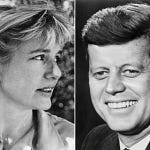Amos Richards Eno Pinchot was born in Paris, to American parents, who were Episcopalians. His father was James Wallace Pinchot (1831–1908), a successful New York City wallpaper merchant and supporter of the conservation movement and his mother was Mary Jane Eno (maiden; 1838–1914), daughter of one of New York City's wealthiest real estate developers, Amos Eno. His siblings were the conservation leader Gifford Pinchot, and Antoinette E. Pinchot who later married Alan Johnstone.
Grey Towers National Historic Site, also known as Gifford Pinchot House or The Pinchot Institute, is located just off US 6 west of Milford, Pennsylvania, in Milford Township. It is the ancestral summer home of Gifford Pinchot, first chief of the newly developed United States Forest Service (USFS) and twice elected governor of Pennsylvania.
Mary Eno Pinchot was born in New York City, the older of two daughters of Amos and Ruth (née Pickering) Pinchot. Amos Pinchot was a wealthy lawyer and a key figure in the Progressive Party who had helped fund the socialist magazine The Masses. Her mother Ruth was Pinchot's second wife and was a journalist who wrote for such magazines as The Nation and The New Republic. Mary was also the niece of Gifford Pinchot, a noted conservationist and two-time Governor of Pennsylvania. Pinchot and her younger sister Antoinette (nicknamed "Tony") were raised at the family's Grey Towers home in Milford, Pennsylvania. As a child, Pinchot met such left-wing intellectuals as Mabel Dodge, Louis Brandeis, Robert M. La Follette, Sr., and Harold L. Ickes. She attended The Brearley School and Vassar College, where she became interested in Communism. She started dating William Attwood in 1935 and, while with him at a dance held at the Choate School, first met John F. Kennedy.
After her graduation from Vassar in 1942, Meyer became a journalist, writing for the United Press and Mademoiselle. As a pacifist and member of the American Labor Party, she came under scrutiny by the Federal Bureau of Investigation.
Cord Meyer was the son of a wealthy New York family. His father, Cord Meyer III, was a diplomat and real estate developer; his mother, Katherine Blair Thaw, belonged to a Pennsylvania family that earned its wealth in the coal business. His grandfather, Cord Meyer II, was a property developer and a chairman of the New York State Democratic Committee.
Dorothy Mae Kilgallen (July 3, 1913 – November 8, 1965) was an American columnist, journalist, and television game show panelist. After spending two semesters at the College of New Rochelle, she started her career shortly before her 18th birthday as a reporter for the Hearst Corporation's New York Evening Journal. In 1938, she began her newspaper column "The Voice of Broadway", which was eventually syndicated to more than 140 papers. In 1950, she became a regular panelist on the television game show What's My Line? continuing in the role until her death.
Kilgallen's columns featured mostly show-business news and gossip, but also ventured into other topics, such as politics and organized crime. She wrote front-page articles for multiple newspapers on the Sam Sheppard trial and, years later, events related to the John F. Kennedy assassination, such as testimony by Jack Ruby.
Dorothy’s father James Lawrence Kilgallen had a career in journalism that spanned seventy-seven years. Born in 1888 in Pittston, Pennsylvania, Kilgallen started working as a reporter in 1903 for the "Chicago Daily Farmers and Drovers Journal." Kilgallen assumed half ownership and editorial duties of the "Laramie Daily Boomerang" in 1913 and served in that capacity until 1914, when he became editor of the "Indianapolis Daily Times." Kilgallen worked briefly for United Press International and the Associated Press before serving with the International News Service from 1920-1958. In 1958 the International News Service merged with United Press International. Kilgallen spent 1960-1966 with the "New York Journal American" before it folded. Kilgallen served with the Hearst Headline Service from 1966 until his retirement in 1981.












Share this post